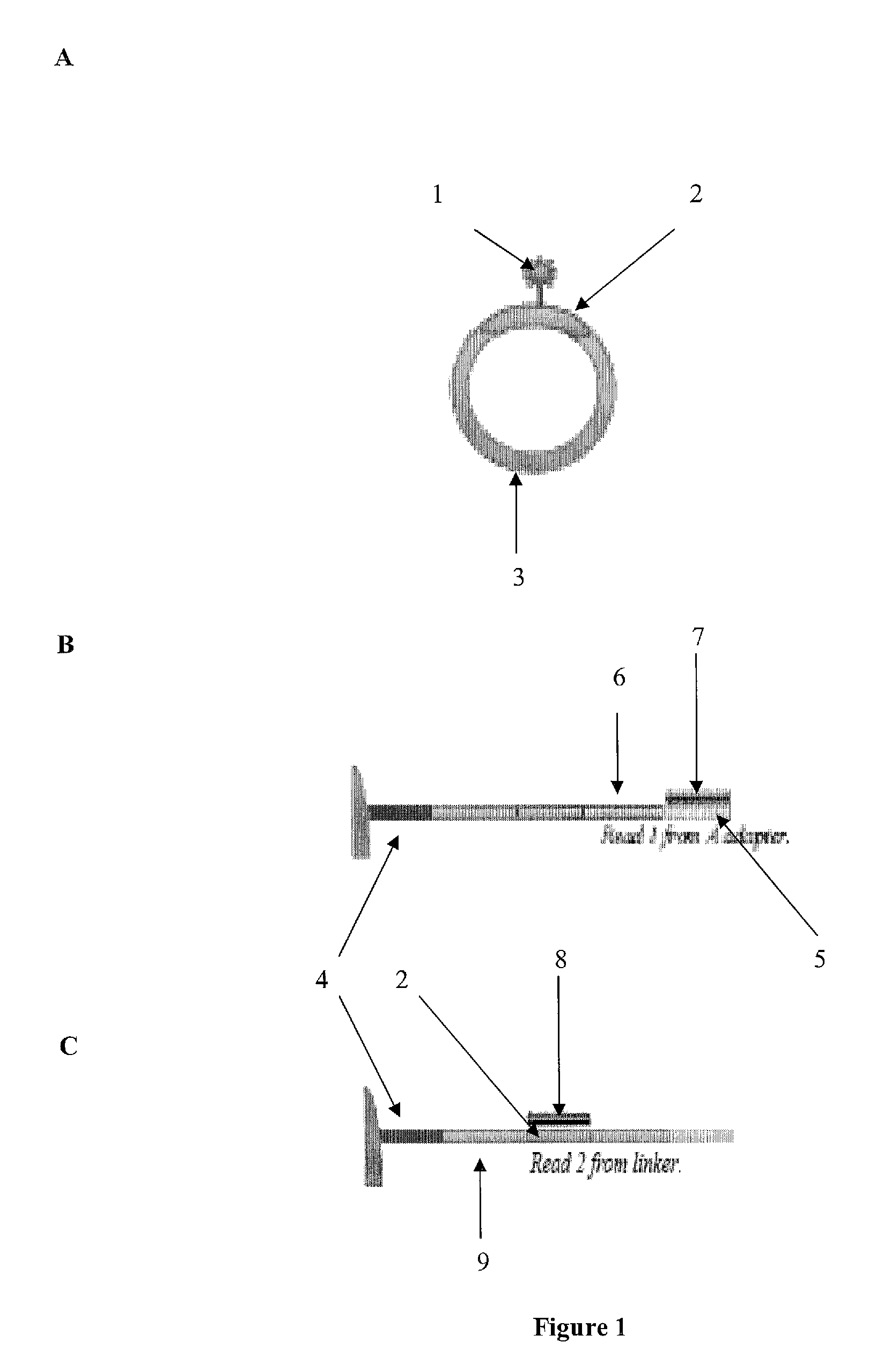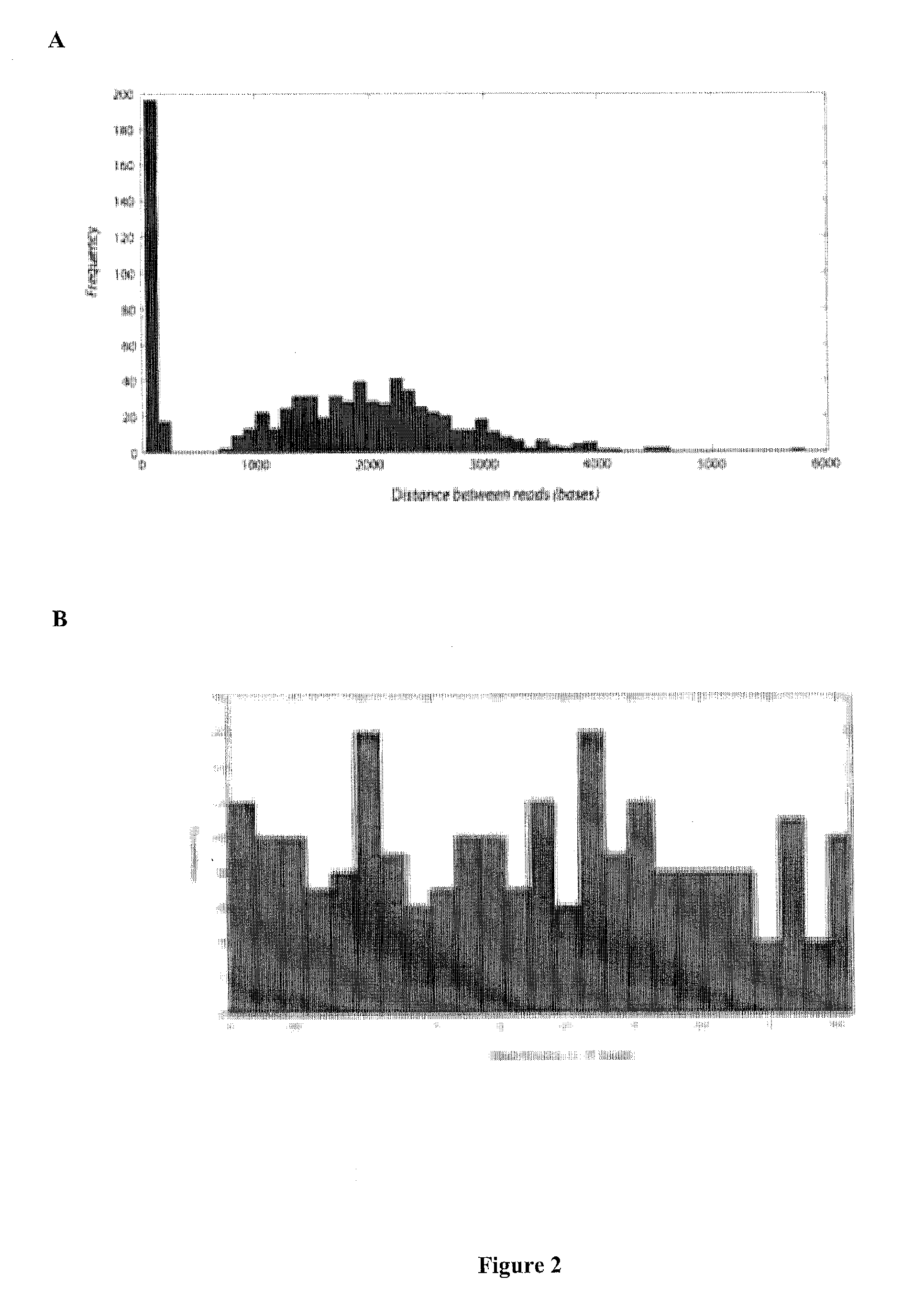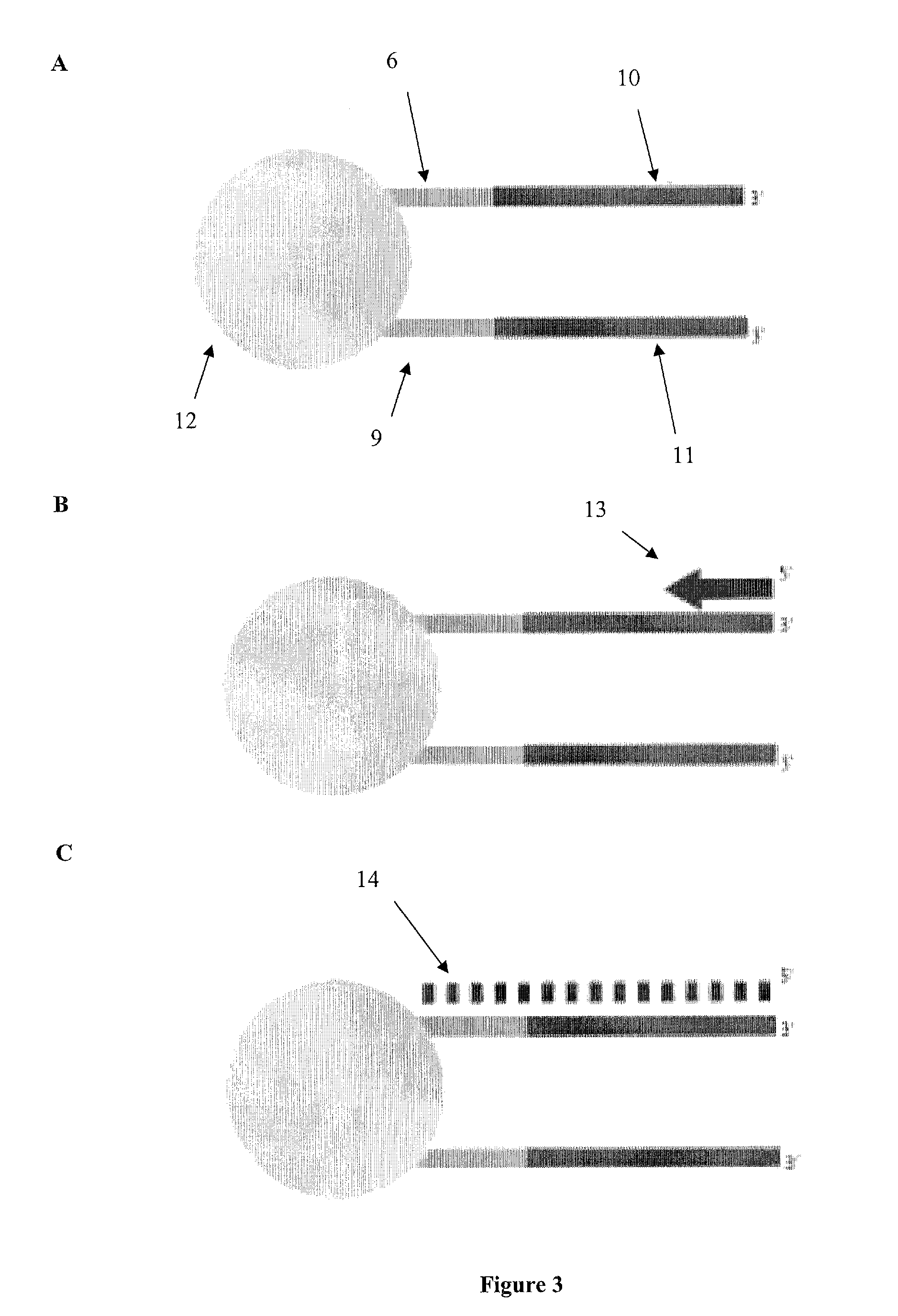Compositions and methods for co-amplifying subsequences of a nucleic acid fragment sequence
a technology subsequence, which is applied in the field of composition and methods for coamplifying subsequences of nucleic acid fragment sequence, can solve the problems of limited scope of sequencing projects, driven down the cost of dna sequence data, and yielding an unrivalled resource of genetic information
- Summary
- Abstract
- Description
- Claims
- Application Information
AI Technical Summary
Benefits of technology
Problems solved by technology
Method used
Image
Examples
Embodiment Construction
[0094]The present invention is related to genomic nucleotide sequencing. In particular, the invention describes a single reaction method to co-amplify multiple subsequences of a nucleic acid fragment sequence (i.e., for example, at least two read pairs from a single library insert sequence). Nucleic acid fragment sequences may include, but are not limited to, localizing library insert sequences and / or unique read pair sequences in specific orientations on a single emulsion polymerase chain reaction bead. Methods may include, but are not limited to, annealing, melting, digesting, and / or reannealing high throughput sequencing primers to high throughput sequencing primer binding sites. The compositions and methods disclosed herein contemplate sequencing complex genomes, amplified genomic regions, as well as detecting chromosomal structural rearrangements that are compatible with massively parallel high throughput sequencing platforms as well as ion semiconductor matching sequencing pla...
PUM
| Property | Measurement | Unit |
|---|---|---|
| Tm | aaaaa | aaaaa |
| time | aaaaa | aaaaa |
| temperature | aaaaa | aaaaa |
Abstract
Description
Claims
Application Information
 Login to View More
Login to View More - R&D
- Intellectual Property
- Life Sciences
- Materials
- Tech Scout
- Unparalleled Data Quality
- Higher Quality Content
- 60% Fewer Hallucinations
Browse by: Latest US Patents, China's latest patents, Technical Efficacy Thesaurus, Application Domain, Technology Topic, Popular Technical Reports.
© 2025 PatSnap. All rights reserved.Legal|Privacy policy|Modern Slavery Act Transparency Statement|Sitemap|About US| Contact US: help@patsnap.com



